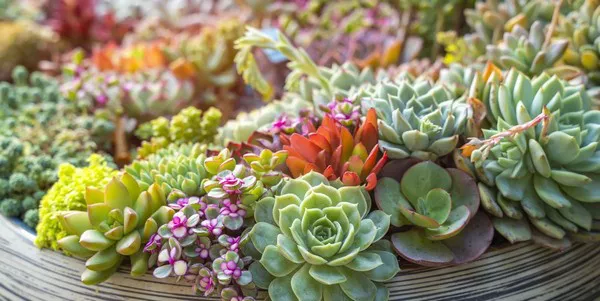Succulents have gained immense popularity as indoor and outdoor plants due to their striking appearance and relatively low maintenance requirements. Among the diverse array of succulent species, the zebra succulent (Haworthiopsis attenuata), with its distinctive zebra-like patterns on its leaves, has captivated the attention of plant enthusiasts. Proper watering is a critical aspect of zebra succulent care, as it directly influences their health and longevity. In this comprehensive guide, we will delve into the intricacies of watering zebra succulents and tips to ensure that you can provide optimal care for these captivating plants.
Understanding Zebra Succulents
Zebra succulents, also known as zebra haworthia or zebra plant, are native to South Africa and belong to the Asphodelaceae family. They are revered for their striking appearance, featuring dark green leaves adorned with distinctive white stripes or bands that resemble zebra stripes. This unique pattern is an adaptation that helps the plant thrive in its natural environment by reducing sun exposure and conserving water.
1. Watering Frequency and Timing
One of the most crucial aspects of zebra succulent care is getting the watering frequency and timing right. Zebra succulents are drought-resistant plants that have adapted to thrive in arid conditions. Therefore, overwatering can be detrimental to their health. As a general rule of thumb, allow the top inch (2.5 cm) of the soil to dry out completely before watering again. This ensures that the roots do not remain consistently wet, preventing issues like root rot.
Water zebra succulents more frequently during their active growing season, which typically occurs in the spring and summer. Reduce watering during the dormant period in fall and winter, as the plant’s growth slows down. A watering schedule of every 2-4 weeks during the growing season and once a month during the dormant period is a good starting point.
2. Choosing the Right Soil Mix
Selecting the appropriate soil mix is crucial for maintaining the well-being of zebra succulents. Opt for a well-draining succulent or cactus potting mix, or create your own by combining regular potting soil with perlite or coarse sand. This mixture promotes proper water drainage and prevents waterlogged roots.
3. Watering Techniques
When watering zebra succulents, employ techniques that prevent water from accumulating in the rosettes of the leaves, as this can lead to rot. Water the soil directly at the base of the plant until water begins to seep out of the drainage holes at the bottom of the pot. Avoid overhead watering or misting, as excess moisture on the leaves can encourage fungal growth.
4. Monitoring Environmental Factors
Environmental conditions play a pivotal role in determining the watering needs of zebra succulents. Factors such as temperature, humidity, and light levels impact the rate at which the soil dries out. In higher temperatures and brighter light, the soil tends to dry out more quickly, necessitating more frequent watering. Conversely, in cooler and more shaded environments, the soil retains moisture for longer, requiring less frequent watering.
5. Signs of Underwatering and Overwatering
Closely observing your zebra succulent’s appearance can provide valuable insights into its watering needs. Signs of underwatering include shriveled leaves, drooping, and slowed growth. On the other hand, overwatering can manifest as discolored leaves, blackened stems, and a foul odor arising from the soil. Adjust your watering routine accordingly if you notice any of these signs.
6. Water Quality
The quality of the water you use is often overlooked but can have a substantial impact on your zebra succulents’ health. Ideally, use room temperature water that has been allowed to sit for 24 hours, as this allows any chlorine or chemicals to dissipate. Avoid using water that is excessively hard or soft, as mineral buildup or lack of nutrients can adversely affect the plants.
7. Seasonal Adjustments
As the seasons change, it’s essential to adjust your watering routine to accommodate the evolving needs of zebra succulents. During the active growth phase in spring and summer, closely monitor the soil moisture and consider increasing the frequency of watering. In fall and winter, scale back watering to prevent root rot during the plant’s dormancy.
8. Pot Selection and Drainage
Choosing the right pot for your zebra succulent is not only an aesthetic consideration but also impacts its overall health. Opt for a pot with drainage holes to ensure excess water can escape and prevent waterlogging. Terra-cotta pots are a popular choice, as they allow for air circulation and water evaporation through the pot walls.
Conclusion
Mastering the art of watering zebra succulents is essential for their well-being and long-term survival. By understanding the unique characteristics of these plants and tailoring your watering routine to their needs, you can enjoy the beauty of these captivating succulents while ensuring their health and vitality. Remember that while zebra succulents are relatively low-maintenance, their care requires attention to detail, particularly when it comes to watering. With proper care, your zebra succulents will thrive, displaying their remarkable zebra-like patterns as a testament to your dedication as a plant caregiver.


